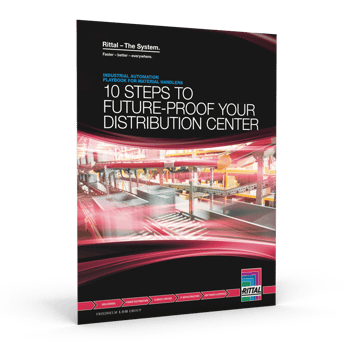FREE WHITEPAPER

The global pandemic that began in 2020 accelerated the shift away from brick-and-mortar stores and toward e-commerce by approximately 5 years.1
This is exponential growth — and it continues to have downstream effects. Retailers and their automation partners are facing more pressure than ever to reduce delivery times and to respond with agility to changing consumer demands.
At the same time, the pandemic has created lasting supply chain issues, and many organizations in the retail and material handling space are still dealing with labor shortages.
So how can material handlers solve for the challenges of today while anticipating and preventing problems that may arise from the next major unexpected event?